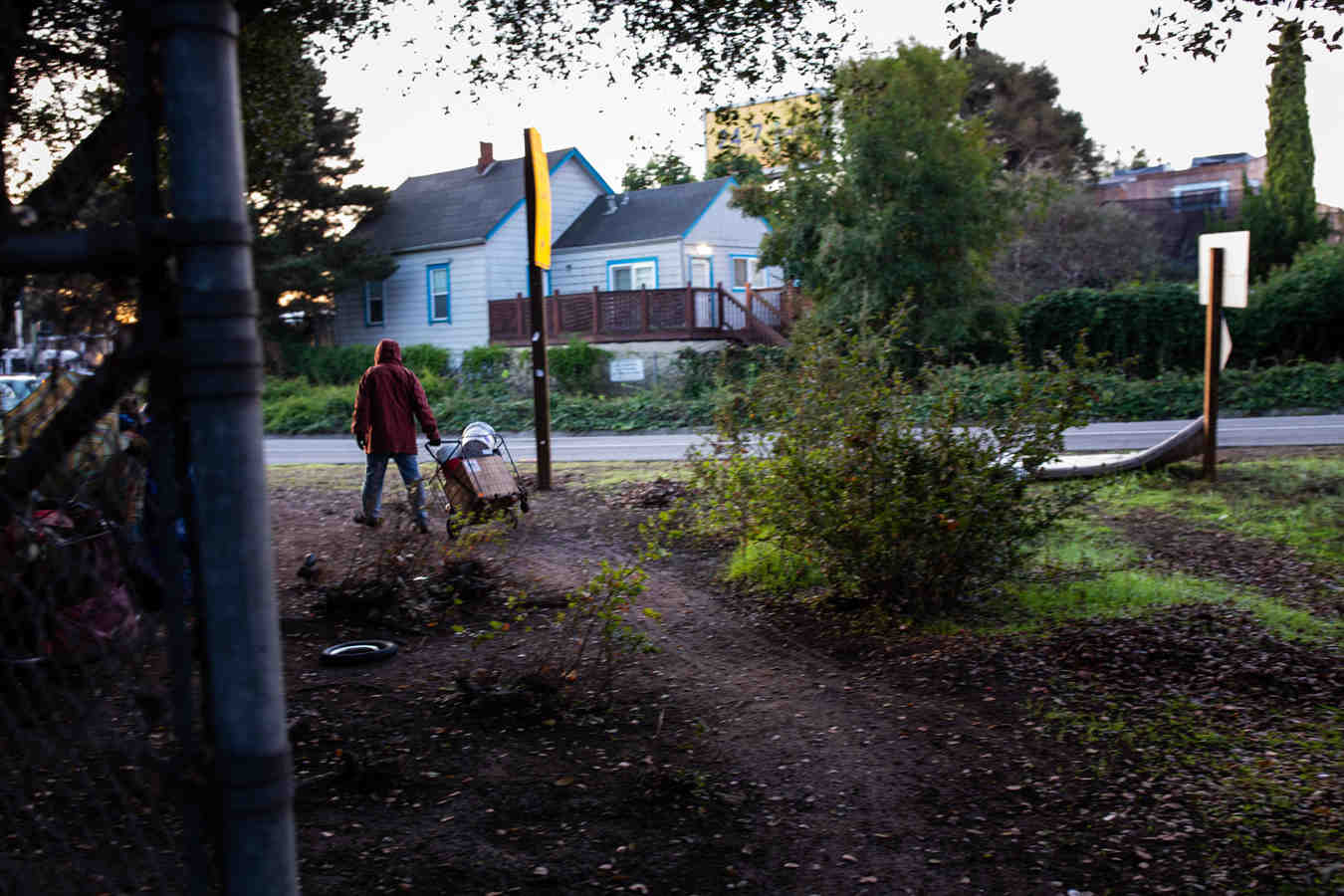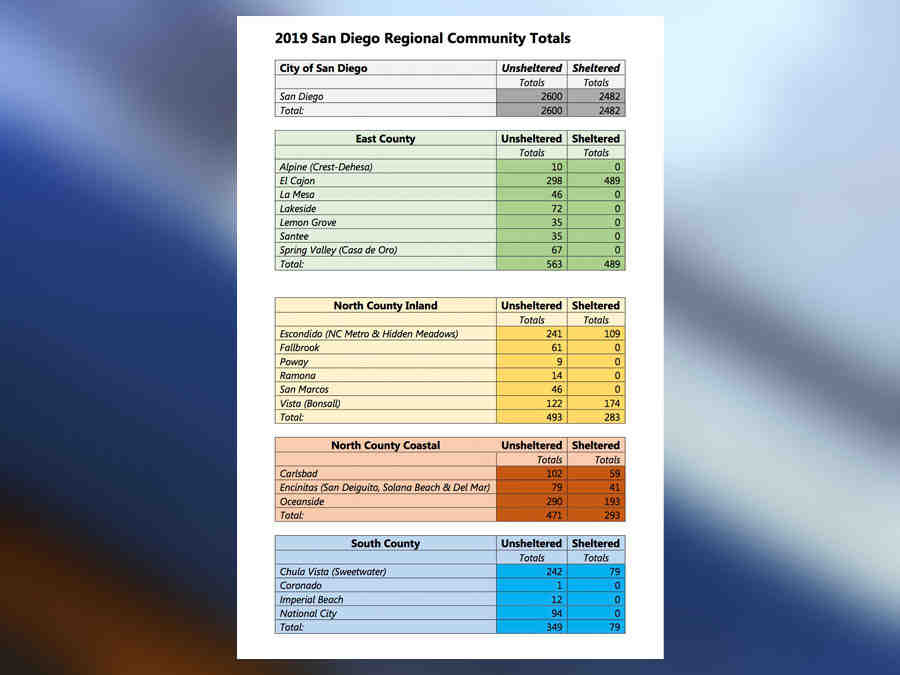Residents should be concerned that Mayor Catherine Blakespear, Encinitas City Council, and city workers seem to be working quietly on plans – behind the scenes – to establish a homeless shelter in Encinitas.
It was only recently disclosed to the public, on May 25, at the last minute, in the last staff update at a meeting of the City Council.
This is worrying, especially considering that Councilman Tony Kranz, an elected official and mayoral candidate, was recently attacked by a homeless man in the city center.
Yet Mr Kranz confirmed this summer when asked if he supported the establishment of a homeless shelter in Encinitas. Where will the homeless spend their time during the day after staying overnight in a shelter?
Residents and local businesses are already heavily influenced by the long-running and growing program of free and unlimited food distribution at the Community Resource Center for those without IDs.
Every day more and more “homeless” passers-by come to Encinitas to live in our streets. And the controversial and unpopular overnight car park of the Jewish Family Services for the homeless living in cars, operating at the flagship Senior and Community Home.
Crime is increasing in Encinitas, related to homeless activities and inactivity in the city, the fentanyl crisis, California’s early release program, open borders, etc.
All of this is evident in the weekly crime reports and news from residents on Next Door.
The current City Council and the naive decision-making and support policies of the mayor are rapidly changing Encinitas. Meanwhile, Encinitas gains a reputation for being a “homeless-friendly” seaside town, against the wishes of the locals.
With liberal free food programs for the undocumented allowing people to live on our streets, in our parks, and on our beaches (both in violation of the city code that is not enforced), and being on the nationwide map of free homeless parking, it’s no wonder to More and more homeless people come to Encinitas.
Who wouldn’t want to live in Encinitas?
The city of Encinitas should work with San Diego County to find the optimal location for the North County Regional Homeless Shelter where services already exist which include drug and alcohol detox and addiction programs, self-care programs, counseling and life skills training programs, etc. Encinitas doesn’t offer any of these services so it doesn’t make sense to put homeless people here.
We are a residential community known for our beaches and family friendly environment.
Most importantly, why are residents not being included in this discussion? Why is the mayor trying to push through this with a secretly appointed working committee? It has to be stopped now – unless the Encinitans want their town to become another homeless California beach town.
The mayor and city council use the recent (during COVID) state “Homelessness Action Plan” (HAP) as justification for the dangerous direction Encinitas is taking without public oversight or approval.
One Size Fits All Plans was developed by a local marriage consultancy with state senator Toni Atkins, a progressive state senator and the most vocal supporter of Sacramento homeless programs in every city in California. Atkins is the author of existing, failed state homelessness laws and policies that cost taxpayers billions of dollars – with no results.
Most Encinitas have explicitly rejected the Homelessness Action Plan claims and recommendations. The plan made no sense to Encinitas and reported incorrect numbers, regional rather than local.
And yet today, thanks to the plan, the city now has more new hires focused on adhering to the HAP, which promotes homeless accommodation and affordable housing, than in the mobility and traffic planning department.
Residents and voters will want to highlight the purpose and actions of the city council before it’s too late and make sure the council members and mayor actually represent the interests of Encinitas and its residents, not outside interests, state interests, and charities that benefit from free government money that goes into the provision of homeless services at Encinitas, a lucrative business model financed by California taxpayers. Shelter beds and pillows are not an option.
This unsuccessful policy approach will only invite more homeless passersby to Encinitas, creating the need for more shelter beds and more homeless parking lots, an everlasting and expanding cycle.
Our city needs real solutions and a mayor and city council to make tough decisions to protect Encinitas from the plague that has hit other homeless cities.
November is just around the corner. It is here that voters will have the deciding vote on the direction of Encinitas.
Natalie SettoonCardiff by the sea
How do you survive being homeless?

Rob’s tips for surviving on the street
- Buy a backpack to store personal belongings.
- Keep the sleeping bag or have a safe place to store it.
- Have two changes of clothing, including waterproof pants and a coat.
- Store spare canned food to keep rats and squirrels away.
How long can someone survive homelessness? Lack of safe and stable shelter, food, income, hygiene, and physical and behavioral health care make it nearly impossible to stay healthy. The average life expectancy of a person experiencing homelessness is only 48 years.
What is daily life like for a homeless person?
There is no “average” life for a homeless person. Living on the streets is as varied and complex as living anywhere, and an individual’s experience of being homeless can be a product of age, health, relationship and employment status, and many other factors.
What is it like being a homeless person?
Being homeless is destabilizing, demoralizing and depressing. You have lost your base, the foundation on which to function. It’s hard to focus. Constant obstacles weaken self-esteem, and a healthy personality withers, crumbles and distracts.
What is life like living on the streets?
Life on the streets is as complex and varied as anywhere else. But the lack of a place to call home makes it that much more difficult. More than just protection against the elements, a home offers comfort and security. Along with this comes the possibility of dreaming about a better future.
How do you overcome being homeless?
Contact your community’s CoC to learn about access to shelter, housing and other resources. The 2-1-1 helpline is available in many communities and offers trained staff 24/7 to help residents access services such as shelter, health care, food, and other welfare programs.
How can homelessness be overcome?
Living as a solution The solution to homelessness is simple – living. Rapid re-housing is an intervention designed to quickly connect people to housing and services.
How does a homeless person survive?
Many live with family, friends, in a vehicle or in a shelter. Others who live in the streets can find refuge in parks, on beaches, and even under bridges.
Why do homeless have cell phones?

Like a resident, a person experiencing homelessness must stay in touch with doctors’ offices and be able to call 911 in an emergency. Besides being an anchor for physical needs, cell phones are also an anchor for resilience.
Do the homeless have access to technology? According to a study by the University of Southern California, 1 in 3 homeless people have not used the Internet in the last three months – about five times more than the general population. And few groups need the Internet as much as people without a permanent residence.
How does technology help homelessness?
Among homeless people, mobile phones, like social media, improve communication and enable people to organize themselves around a common cause, such as the demand for better health care and safe housing. Additionally, cell phones are helpful in social relations.
How can social media help homelessness?
After experiencing homelessness, Horvath discovered that social media provides homeless people with countless resources that offline resources cannot. These resources include locating services, finding support, sharing stories, and getting a job (Tabb, 2011).
What are three solutions to homelessness?
Make sure those using the safety net services have the support they need to get and maintain an apartment. Make sure that those involved in criminal justice do not become homeless. Create conditions for the development of affordable housing enough to meet the needs of our community.
How do some homeless people have phones?
As for the phones themselves, people experiencing homelessness do not always have phones from when they were in a stable home. Some use models from friends or family, while others find inexpensive devices at pawn shops, thrift stores, and even some dollar stores.
Do most homeless people have cellphones?
“Ninety-five percent of the homeless have cell phones, and 80 percent of them have smartphones,” said Spriggs. “They can often use prepaid phones without credit, but have access to free Wi-Fi to connect to the Internet.”
Do homeless people own phones?
The vast majority of people experiencing homelessness have cell phones, which can often serve as lifelines – or at least they could, until the outbreak of the COVID-19 pandemic.
What percent of homeless people have smart phones?
The study published by UCSF focused on homeless people aged 50 and over and found that 72% had cell phones or permanent access to a cell phone. 36 percent has smartphones.
Do homeless people own phones?
The vast majority of people experiencing homelessness have cell phones, which can often serve as lifelines – or at least they could, until the outbreak of the COVID-19 pandemic.
What percentage of homeless have smart phones?
Despite the tense circumstances, the vast majority of people experiencing homelessness remain connected and technologically knowledgeable. “Ninety-five percent of the homeless have cell phones, and 80 percent of them have smartphones,” said Spriggs.
How much money would it take to end homelessness?

Eliminating homelessness in the United States would cost $ 20 billion, according to the Department of Housing and Urban Development.
How Much Money Would It Take To End US Homelessness In 2020? According to HUD, ending homelessness would cost $ 20 billion. Less than half of what is spent on weight loss and self-improvement each year. Less than half of what some people spend on animals each year. Due to Covid-19, homelessness in the United States may increase by as much as 45% next year.
How much money would it take to feed the homeless in America?
The average grant per coupon holder is around $ 8,000 per year. Multiply that by 7.4 million and it would cost at least $ 59 billion a year to fully fund the voucher program.
How much money does the US spend on the homeless?
The National Alliance to End Homelessness has calculated that in 2021 the U.S. federal government passed over $ 51 billion to fund select homelessness and housing programs. Of course, this does not include municipal, county or private money invested in homelessness and cheap housing.
How much would it cost to house every homeless person in America?
The US Department of Housing and Urban Development estimates that it costs about $ 40,000 a year to live on the street for a homeless person. The BKRHC estimated that for 2016 to 217, the total combined budget for local services was approximately $ 25 million. It came out at around $ 5,551 per person.
How much would it cost to house all homeless people in California?
Keep up with the development of articles that hit the headlines.
How much does it cost to house the homeless in LA?
If you multiply the average cost of HHH units in Los Angeles by nearly $ 600,000, La Franchi said, and use the same formula statewide, “it would cost $ 96 billion to accommodate anyone who is currently experiencing homelessness. This is over 45% of our country’s Common Fund budget ”.
How much does the US spend on homelessness 2021?
The National Alliance to End Homelessness has calculated that in 2021 the U.S. federal government passed over $ 51 billion to fund select homelessness and housing programs.
How much of the US is homeless 2021?
WASHINGTON – The United States Department of Housing and Urban Development (HUD) today published its Annual Homelessness Assessment Report for 2021 Part 1 in Congress. The report found that more than 326,000 people experienced sheltered homelessness in the United States in a single night in 2021 , which is a decrease of 8% compared to 2020.
What percent of the US is homeless 2022?
| Country | California |
|---|---|
| Complete homelessness | 161 548 |
| Homeless households | 7044 |
| Veterans | 10980 |
| Young adults | 11 993 |
How much money does homeless get in California?

A family of four or fewer people can receive $ 65 per day for up to 16 consecutive days to meet temporary shelter needs while you are looking for permanent accommodation. If there are more than four people who received help, your family could get $ 15 more for each person in the family covered, up to $ 125 per day.
Do homeless people in SF get paid? Nine of the 14 participants were homeless at the start of the San Francisco Basic Income Program. They received $ 500 a month for six months. By the end, six of them had found permanent residence.
Do homeless get welfare in California?
Homeless people can get benefits even if they do not have a permanent mailing address or live on the street. [7 CFR § 273.3 (a); MPP 63-401.5.] CalFresh Benefits for Shelter Residents: Homeless people can get CalFresh benefits even if they live in a shelter and receive free meals there.
How much does a homeless person make a year in California?
| Annual salary | Hourly wage | |
|---|---|---|
| Top earners | $ 68,386 | PLN 33 |
| 75th percentile | $ 51,026 | PLN 25 |
| Average | $ 41,576 | 20 zł |
| 25th percentile | $ 30,510 | PLN 15 |
How much money do homeless get from government in California?
Democratic governor Gavin Newsom, facing re-election this year, has committed record sums to tackle homelessness that permeates all of the state’s large cities, as well as many smaller communities. The state provides about $ 12 billion for homelessness programs over two years.
How much money does LA get for homeless?
LOS ANGELES The City of Los Angeles has agreed to spend up to $ 3 billion over the next five years housing some of its 41,000 homeless residents, according to a proposed settlement announced on Friday.
How much does LA County spend on homelessness?
As Los Angeles County prepares to step up and refocus its efforts to tackle homelessness, the Board of Directors has approved a $ 532.6 million spending plan that significantly expands its permanent and temporary housing arrangements and increases funding for local cities in the coming fiscal year, which starts on July 1.
Does Los Angeles pay homeless people?
LA pays $ 600,000 for homeless units. People experiencing homelessness in Skid Row, Los Angeles, November 25, 2021.
Do you get money for being homeless in California?
CalWORKs HA can provide temporary shelter payments up to 16 days, as well as security or maintenance payments, including deposit and rent for the last month or up to two months of rent arrears.
Does California give money to homeless?
In 2020, the state allocated funds for the homeless, housing, relief and prevention, or HHAP funds to combat the great problem that plagues California. Cities and counties could use this money on homelessness interventions to remove people from the streets.
How much money do homeless receive in California?
If your family is homeless, the amount the county can give you has increased. A family of four or fewer people can receive $ 65 per day for up to 16 consecutive days to meet temporary shelter needs while you are looking for permanent accommodation.







